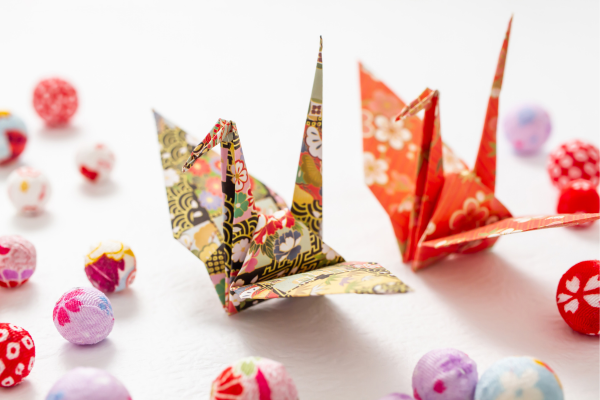The Timeless Craft: Exploring the Art and Tradition of Japanese Origami – By eLanka

In the bustling streets of Japan, amidst the vibrant culture and rich history, lies a tradition that has captured the imagination of people worldwide for centuries: the art of origami. Originating in Japan around the 17th century, origami, which translates to “folding paper,” is much more than a mere pastime or craft. It embodies the essence of patience, precision, and creativity, reflecting the soul of Japanese culture itself.
Origami’s roots in Japan trace back to ceremonial traditions, where folded paper was used in religious rituals and formal ceremonies. Over time, this practice evolved into a revered art form, with artisans meticulously crafting intricate designs using nothing but a single sheet of paper.
Central to origami’s allure is its simplicity. With just a square piece of paper and a skilled hand, one can create a myriad of shapes, from delicate flowers to intricate animals, each imbued with its own symbolism and significance. The crane, in particular, holds a special place in Japanese culture, symbolizing longevity, peace, and good fortune. Folding a thousand cranes, known as senbazuru, is a traditional practice believed to bring luck and grant wishes—a testament to the deep-rooted connection between origami and spirituality.
Beyond its cultural significance, origami serves as a medium for artistic expression and innovation. Modern practitioners push the boundaries of the art form, experimenting with complex designs and unconventional materials, breathing new life into an ancient tradition. From mathematical origami, exploring the geometric principles behind folding, to modular origami, creating intricate structures from multiple folded units, the possibilities are endless, limited only by the imagination of the creator.
Origami’s influence extends far beyond the borders of Japan, captivating enthusiasts of all ages and backgrounds worldwide. Its therapeutic qualities have been recognized in the fields of education and therapy, where it is used to foster creativity, develop problem-solving skills, and promote relaxation and mindfulness.
In the digital age, origami continues to thrive, finding new audiences through online tutorials, social media platforms, and virtual communities. While the tools may have evolved, the essence of origami remains unchanged—a timeless tradition that transcends language and culture, connecting people across the globe through the shared joy of creation.
As we marvel at the intricate folds and graceful forms of Japanese origami, we are reminded of the profound beauty that can be found in simplicity. In a world filled with noise and chaos, origami offers a moment of tranquility, inviting us to slow down, take a breath, and appreciate the artistry of the present moment.






